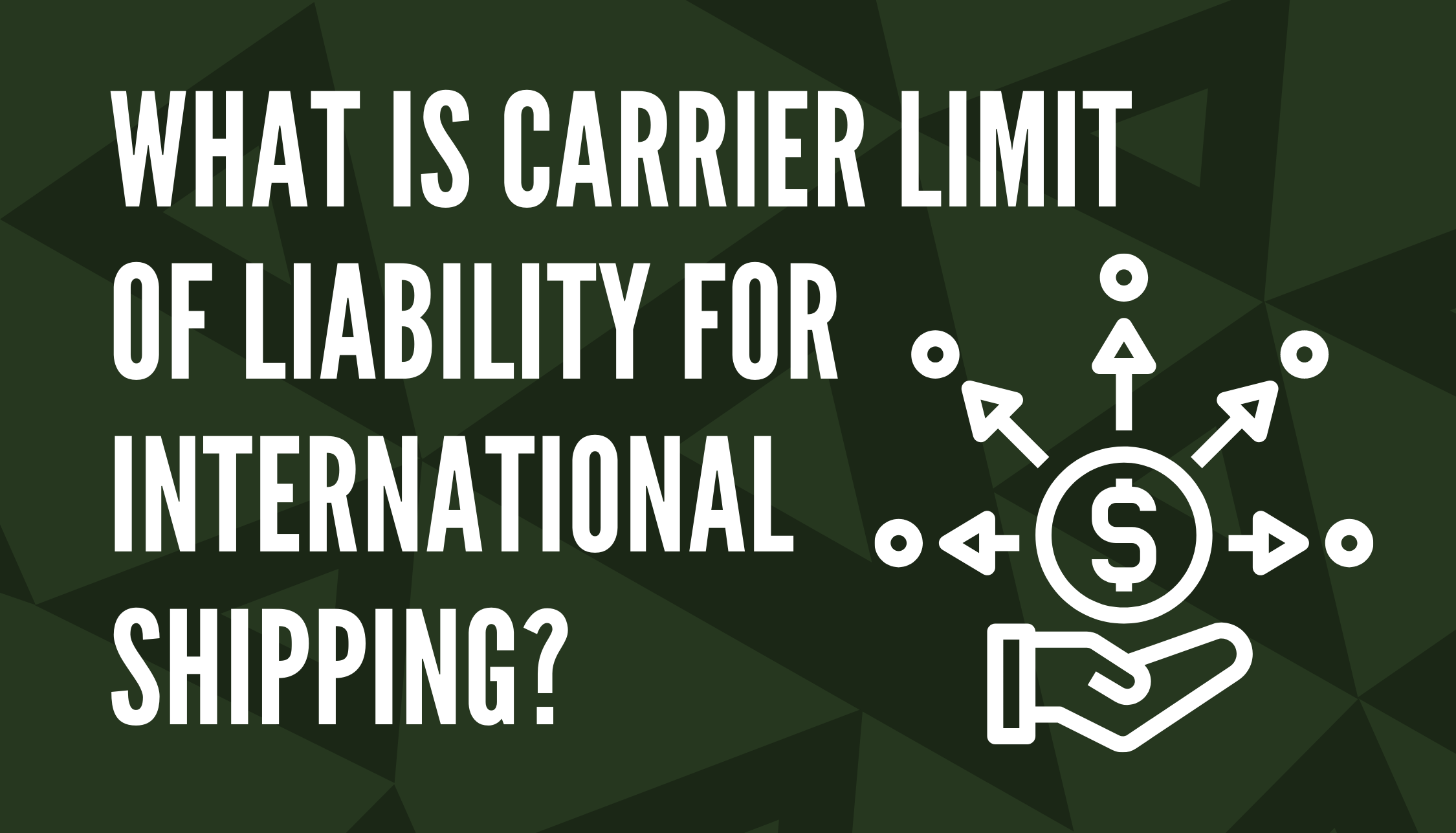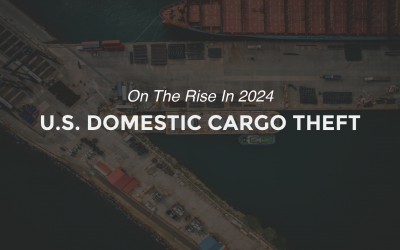Is your carrier liable for your damaged goods? Learn the details of carrier limit of liability and how it could apply to you.
What is Carrier Limit of Liability?
The Carrier limit of liability determines the maximum amount of money that carriers can be held liable for in the event of damage, loss, or delay of cargo. However, limits of liability vary between carriers and situations.
What is Covered?
Carrier limit of liability covers damage or loss that occurred due to carrier negligence. To settle a claim, the responsibility is typically on the importers to prove that the damage was the fault of the carrier. There is also no official deadline to settle a claim so that the process could drag on for months.
For a carrier to be liable for loss or damage, importers have to prove that their cargo was in good condition when given to the carrier, but was delivered damaged, or not delivered, and they must prove the amount of the damage they are claiming.
Importers must file claims within nine months of the date upon which delivery was or should have been made. Carriers have 30 days to acknowledge a claim has been made and must respond to the shipper within 120 days.
What is Not Covered?
Carriers are not held responsible for damage or loss that occurs due to:
- An act of God, like inclement weather or a natural disaster
- Fire
- Interference by a public enemy of the U.S.
- Act of war, like strikes, riots or civil commotions
- Improper packaging of cargo by the shipper
- Government action, like road closures, quarantines, or trade embargoes
- Goods that are prone to spoil or become defective over time, like produce, tobacco, or medical
- supplies
- Latent defects to the hull or machinery
- Seaworthiness of the vessel
- Criminal acts or negligence by master or crew
Carmack Amendment
History of carrier limit of liability can be traced to the Carmack Amendment, which was initially designed for water and rail carriers in 1906 and began applying to motor and rail carriers in 1935. The Carmack Amendment is amid the top governing legislation of freight claims laws. The purpose of this amendment was to put rules in place around the rights, responsibilities, and liabilities of shippers and carriers in the event of a loss. It protects buyers and sellers against excessive damage on the part of the carrier. Carmack only applies if carriers are providing a regulated service subject to federal jurisdiction.
The Carmack Amendment sets minimum time standards for filing claims and initiating lawsuits. Shippers must file claims less than nine months from the date of delivery and for initiate lawsuits less than two years from the date the claim is denied. If there is no tariff, then there is no time limit to file a claim nor a two-year limitation on filing a lawsuit.
When transporting an exempt commodity, the Carmack Amendment does not apply. For these shipments, the carrier could have tariff rules providing for shorter time limits than the minimum required by the Carmack Amendment.
Carmack implies that carriers are considered to be a virtual insurer and are strictly liable for cargo claims. The exceptions to this are an Act of God, a public enemy, shipper negligence, government policies, and inherent vice of goods which excuses carriers from holding liability if a freight loss occurs. If one or more of these factors is present, the carrier must also show that it was free of negligence.
The Carmack Amendment governs domestic ground shipments, and other freight claim laws govern ocean and air transport limits of liability.
Ocean Shipments Under COGSA
Ocean shipments in and out of the U.S. are governed by the Carriage of Goods by Sea Act (COGSA). An ocean carrier has 17 defenses under COGSA, but the carrier must also show that negligence did not contribute to loss or damage.
The timeline to file a claim for an ocean shipment is three short days from the date of delivery. Therefore, goods transported by ocean need to be inspected at the as soon as possible upon delivery to identify potential damage and begin the claims process. The timeline to initiate a lawsuit is one year from the date of delivery.
Ocean carriers are liable from the period the goods are loaded on the ship to the time they are discharged from the ship. Carriers are barred from using an amount lower than $500 per package for damaged or lost goods. This means that carriers owe $500 for each package that is lost or damaged. Neither the carrier nor the ship is liable for any loss or damage to or in connection with the goods being transported in an amount exceeding $500.00 per package unless the nature and value of such goods have been declared by the shipper before shipment and inserted in the bill of lading.
Ocean carriers have been able to extend the COGSA liability regime to its subcontractors as a result of Kawasaki Kisen Kaisha Ltd. v. Regal-Beloit Corp. The supreme court’s decision held that an ocean carrier could, through its bill of lading or other contracts, extend COGSA to inland shipping by a motor or rail carrier. The majority of cargo damage cases tried in the United States are governed by COGSA, because Congress has declared that it is applicable in the statute or because the parties have chosen to apply it.
Air Cargo Shipments Under the Montreal Convention
The liability of air carriers for lost or damaged cargo during transit has been limited since the dawn of air transportation. The original Warsaw Convention limited liability to 250 French gold Francs per kilogram. The Warsaw Convention was then replaced by The Montreal Convention, which governs all international carriage of people, baggage, or cargo performed by aircraft for reward between or within member countries.
The Convention does not provide a time limit for claims for non-delivery, but airlines typically set a limit of 120 days from the notice of non-delivery. The timeline to initiate a lawsuit is two years from the date of delivery. The current carrier limit of liability is approximately $12.95 per pound.
Depending on the air carrier, the carrier’s specific tariff classification for a shipment sets the limits of liability. Financial liability could be less than $50 per package, so importers should take on the responsibility of preventing damage from occurring through proper packaging of air shipments.
Under the Convention, the consignee is required to prepare an air waybill or cargo receipt showing:
- Places of departure and destination
- At least one stopping place if departure and destination are within the same country, but carriage includes a stopping place in another country
- Weight of the shipment
The Benefit of Cargo Insurance
Whether the accident was within the carrier’s control or not, importers are at risk of losing money if the value of cargo exceeds the carrier’s reimbursement limits. The only way to ensure reimbursement for the full value of a shipment is to purchase cargo insurance. Contact TRG today to get a free Marine Cargo Insurance quote.
Importers must pay for cargo insurance as part of the freight bill, but the protection it provides goes a long way if damage does occur, even if it is the carrier’s fault. Cargo insurance is not one size fits all, so there are different types of cargo insurance to cover any importer’s needs.
It is essential to differentiate between cargo insurance and cargo liability insurance. Importers often assume that their freight shipping is automatically insured under the carrier’s limits of liability. Carrier liability is not the same as insurance and usually does not cover the full value of a freight shipment.
Carrier Liability Claims Process vs. Cargo Insurance Claims Process
If you are making a claim and your freight is only covered by carrier limit of liability coverage:
- Your claim must be filed within nine months of delivery
- The delivery receipt has to include notice of damage
- Proof of value and loss is required
- Carriers have 30 days to acknowledge your claim and have to respond within 120 days
- Carrier negligence has to be proven
If your shipment is covered by freight insurance:
- Proof of value and loss is required
- Claims are typically paid within 30 days
- You are not required to prove carrier negligence







